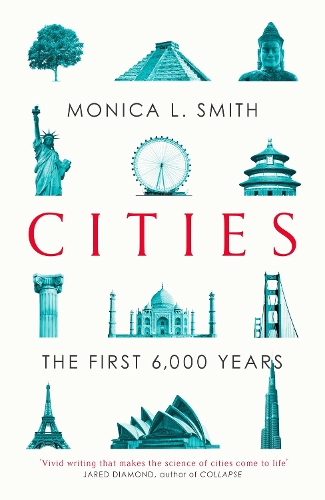
Cities: The First 6,000 Years
(Paperback, Export/Airside)
Available Formats
Publishing Details
Cities: The First 6,000 Years
By (Author) Monica L. Smith
Simon & Schuster Ltd
Simon & Schuster Ltd
1st May 2019
Export/Airside
United Kingdom
Classifications
Professional and Scholarly
Non Fiction
307.7609
Physical Properties
Paperback
304
Width 153mm, Height 234mm
Description
A FASCINATING INVESTIGATION INTO THE HISTORY OF CITIES: WHY DID THEY OCCUR, HOW HAVE THEY EVOLVED, WHY DO SO MANY OF US CHOOSE TO LIVE IN THEM AND HOW DO THEY AFFECT US
Monica Smith is the person best qualified to write a book about the big problems raised by the increasing concentration of the human population into cities. She also has a gift for vivid writing that will make the science of cities come to life for the broad public. I expect thatCITIESwill be a great read and will sell well.
Jared Diamond, author of Collapse
Over half of the worlds population lives in an urban area and cities around the globe are getting bigger and bigger. Love them or hate them, more and more of us are choosing to live in them.
Citiesinvestigates the following intriguing questions: why did cities start to occur around 6,000 years ago, how have they evolved, why do so many of us choose to live in them, how do they affect us, and what does the future hold at a time when were increasingly connected by technology
In Cities, Monica L. Smith points out that, even if you dont live in a city, your life is inevitably affected by one, whether you commute into one for work, sell coffee beans to a company that supplies urban coffee shops, or host city-dwelling tourists seeking adventure and respite from the city in your remote village.
Using fascinating anecdotes and research findings from her work as an archaeologist, Smith also reveals that many of the problems that we associate with modern cities (violence, hyperconsumption, etc.) have, in fact, always existed. And, more positively, how many of the things that draw us to cities in modern times (educational and economic opportunities, social mobility, culture) are the things that have drawn us to them since they first appeared.
She also makes the controversial argument that its down to cities that the middle class exists and she examines why social movements flourish in cities in a way they rarely do in rural settings.
Author Bio
Monica L. Smithis professor of anthropology and professor in the Institute of the Environment and Sustainability at the University of California, Los Angeles. She holds the Navin and Pratima Doshi Chair in Indian Studies and serves as the director of the South Asian Archaeology Laboratory in the Cotsen Institute of Archaeology. Her archaeological expertise includes fieldwork in Egypt, England, India, Italy, Tunisia, Bangladesh, Turkey, and Madagascar, supported by highly competitive research grants from the National Science Foundation, the National Endowment for the Humanities, and the National Geographic Society.
